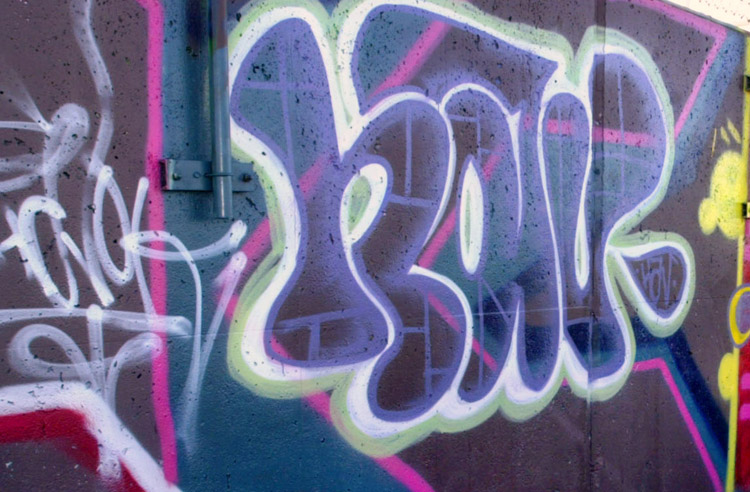PORTLAND — Are the spray-painted markings on walls throughout the city the work of artists or criminals?
Graffiti and the motivations behind it were the subject of a panel discussion Tuesday night at Space Gallery.
The talk drew more than 50 people, including property owners who are frustrated by vandalism, and artists who oppose stifling creative expression.
“I had no idea so many people were this passionate about little scratches in walls,” said the moderator, Jennifer Hutchins, referring to the literal translation of “graffiti.”
The event, put on by the Portland Arts & Cultural Alliance, was intended to promote understanding between people on different sides of an ongoing debate in the city, said Hutchins, executive director of the alliance.
Portland city councilors are considering a graffiti ordinance that would fine people who vandalize property, as well as property owners who don’t work quickly to remove the markings. A public hearing on the ordinance is scheduled for May 10 before the City Council’s Public Safety Committee.
On the four-person panel for Tuesday’s discussion were Jay York, an outspoken opponent of graffiti; Trish McAllister, the city’s “neighborhood prosecutor”; Tim Clorius, a professional graffiti artist; and Kyle Bryant, a printmaker.
Bryant said that when he was growing up in Auburn, he found his passion for art through illegally tagging walls. Now a legitimate, law-abiding artist, he said, he’s an example of a positive result of graffiti.
“Graffiti can lead to a lot of great and inspiring things,” he said. “Graffiti writers are not always criminals.”
York, however, said the term “graffiti writer” is a misnomer. “Vandal” is a more appropriate word, he said.
McAllister agreed. “It’s criminal mischief,” she said.
For the past year, McAllister has been working for the Portland Police Department to identify quality-of-life issues in the city. She said she talks to people daily about the city’s graffiti problem. The markings, she said, have created a culture of disrespect in neighborhoods and spawned other types of criminal behavior, such as littering and public urination.
The art of graffiti has created its own culture, Clorius said.
Looking at a photo of letters spray-painted on a sign, he and Bryant analyzed the marking. The shape of the letters and the way the paint dripped showed it was done by someone who was just starting out, they said.
But York didn’t see the work of a fledgling artist.
“This is a sign of disrespect,” he said.
The artists agreed that tagging private property should be discouraged. They suggested providing more legal walls for graffiti, to lessen the problem.
“It’s not going to go away,” Bryant said.
Staff Writer Leslie Bridgers can be contacted at 791-6364 or at: lbridgers@mainetoday.com
Copy the Story Link
Send questions/comments to the editors.




Success. Please wait for the page to reload. If the page does not reload within 5 seconds, please refresh the page.
Enter your email and password to access comments.
Hi, to comment on stories you must . This profile is in addition to your subscription and website login.
Already have a commenting profile? .
Invalid username/password.
Please check your email to confirm and complete your registration.
Only subscribers are eligible to post comments. Please subscribe or login first for digital access. Here’s why.
Use the form below to reset your password. When you've submitted your account email, we will send an email with a reset code.